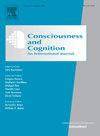隐形时间关联线索诱发的无意识时间注意
IF 2
3区 心理学
Q2 PSYCHOLOGY, EXPERIMENTAL
引用次数: 0
摘要
时间注意力是一种根据时间来确定信息优先顺序的能力。虽然已知有意识地感知时间结构信息会产生时间注意,但是否会在无意识中产生时间注意仍不确定。本研究利用时间线索范式和遮蔽技术来探索有意识和无意识时间注意机制之间的差异。实验 1 发现,可见和不可见线索都能引发时间注意,可见线索的效果更强。实验 2 使用脑电图(EEG)记录显示,可见和不可见线索都能唤起或然负变异(CNV)成分,尽管不可见线索唤起的或然负变异成分较小。P300 分量进一步证实了这一模式。层次漂移-扩散模型(HDDM)分析表明,有意识和无意识的时间注意力效应都涉及非知觉决策过程。这些发现既符合全局工作空间理论,又对该理论提出了挑战,表明虽然意识通过全局广播增强了有意识注意,但无意识注意可能依赖于更局部的神经网络。本文章由计算机程序翻译,如有差异,请以英文原文为准。
Unconscious temporal attention induced by invisible temporal association cues
Temporal attention is the ability to prioritize information based on timing. While conscious perception of temporally structured information is known to generate temporal attention, whether it occurs unconsciously remains uncertain. This study used a temporal cueing paradigm with masking techniques to explore the differences between conscious and unconscious temporal attention mechanisms. Experiment 1 found that both visible and invisible cues triggered temporal attention, with stronger effects for visible cues. Experiment 2, using electroencephalogram (EEG) recordings, showed that both visible and invisible cues evoked contingent negative variation (CNV) component, albeit smaller with invisible cues. The P300 component further supported this pattern. Hierarchical drift–diffusion modeling (HDDM) analysis demonstrated that both conscious and unconscious temporal attention effects involve non-perceptual decision-making processes. These findings both align and challenge the Global Workspace Theory, suggesting that while consciousness enhances conscious attention via global broadcasting, unconscious attention may rely on more localized neural networks.
求助全文
通过发布文献求助,成功后即可免费获取论文全文。
去求助
来源期刊

Consciousness and Cognition
PSYCHOLOGY, EXPERIMENTAL-
CiteScore
4.30
自引率
8.30%
发文量
123
期刊介绍:
Consciousness and Cognition: An International Journal provides a forum for a natural-science approach to the issues of consciousness, voluntary control, and self. The journal features empirical research (in the form of regular articles and short reports) and theoretical articles. Integrative theoretical and critical literature reviews, and tutorial reviews are also published. The journal aims to be both scientifically rigorous and open to novel contributions.
 求助内容:
求助内容: 应助结果提醒方式:
应助结果提醒方式:


